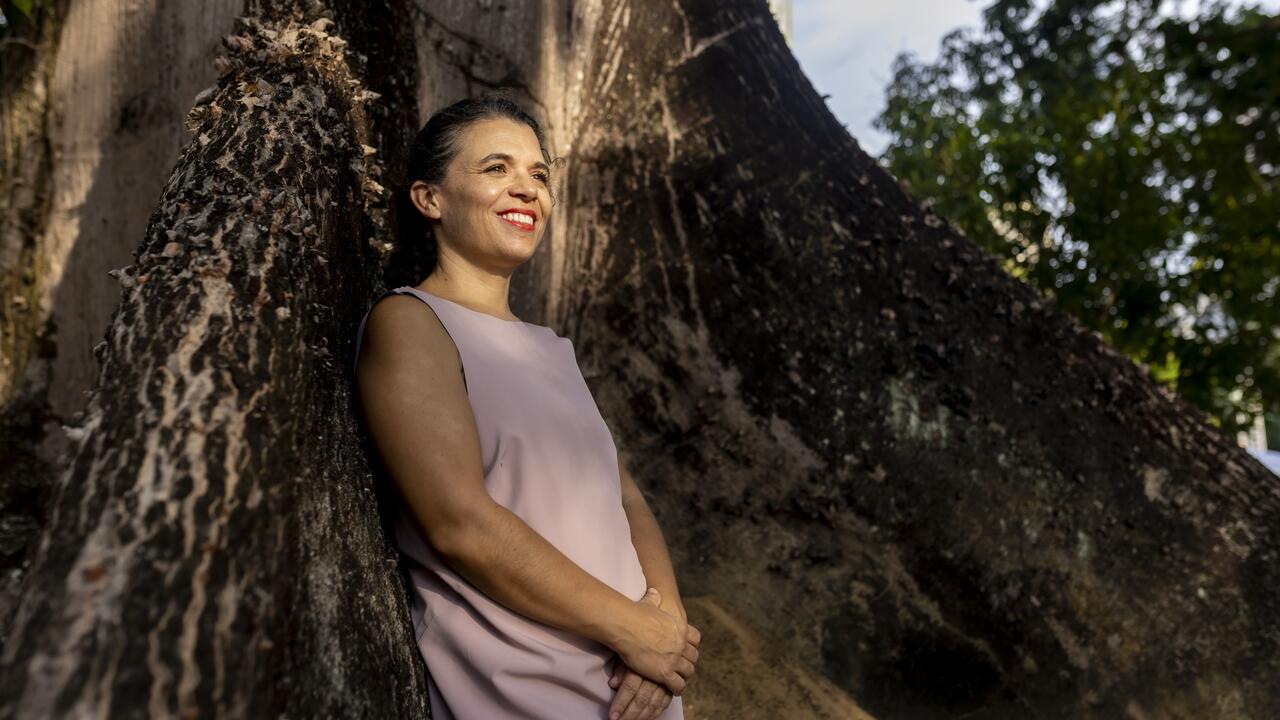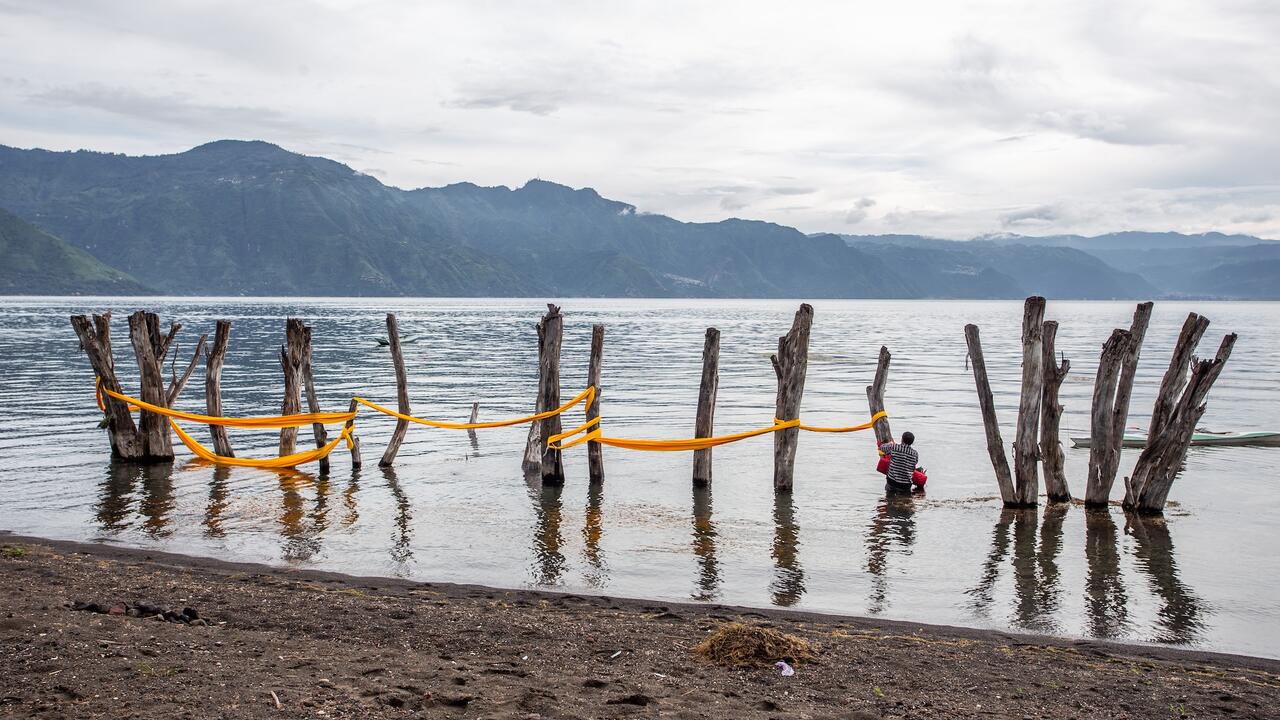Postcard from Tbilisi
A report from ‘Frozen Moments: Architecture Speaks Back’
A report from ‘Frozen Moments: Architecture Speaks Back’

The driver drove a Subaru with tinted windows. He spoke no English, so we drove in silence on the George W. Bush highway to Tbilisi. It was four in the morning on a warm Caucasian night, and the streets were filled with shirtless men, drunkenly meandering across the roads. When we arrived in Betlemi, a crumbling former Jewish quarter on the border of gentrification, he crossed himself before the church, and then took off.
Gentrification is like counter-insurgency, expanding outwards from creative inkspots. There’s a link between speculation and aesthetic attention, and the hint of a crypto-primitivist ritual. The artists are summoned, like shamans, by price-mechanisms, to dramatize contradictions and to calm ghosts.
Theatre stages keep crawling from the shells of dead spaces. Three months ago, in Santarcangelo in Italy, the theatre group Fanny & Alexander exhibited an image-atlas homage to the work of Aby Warburg in a former prison. Theatre groups in the UK (where Warburg’s unique library is facing destruction) are apparently discussing former schools. ‘Ex-Apartments’, a performance format developed by the Berlin HAU, where mini-works are staged in flats, has been franchised across Europe.


Frozen Moments (2010), a light installation by Kote Jincharadze
The Laura Palmer Foundation has produced projects in the ruins of the 10th-Anniversary Stadium in Warsaw (a structure itself built from ruins, which must be some kind of double whammy…) and curated the Warsaw edition of ‘Ex-Apartments’. The organization has been expanding internationally in the past several years, in line with the increasing export competitiveness of the Polish cultural industries, and last year produced an impromptu event in Betlemi, Georgia, sponsored by the European Cultural Foundation and the Open Society Institute Budapest.

The opening night of ‘Frozen Moments’
‘Frozen Moments’ was the sequel. Now centered on the former Georgian Ministry of Highway Construction, George Chakhava‘s crumbling masterpiece of Brezhnevian Modernism, the event was a three-headed monster of symposium, festival and safari. Nicknamed ‘Whose Cock is in Whose Ass?’ by locals, the Ministry was completed in 1975, based on a blueprint which Chakhava, then Minister of Highway Construction, commissioned from himself. Now owned by the Bank of Georgia, the building is about to undergo renovation on the way to becoming their new headquarters. It’s a marvelous metaphor, one of many in this richly and confusingly allegorical country. The first day of sightseeing, led by the mumbling Delft-trained architect Levan Asabashvili of Urban Reactor, included a cable car suspended in midair, a group of rotting towers housing Abkhazian refugees and the Bond-villain-esque mountain lair of the oligarch Boris Ivanishvili. Further excursions showcased the ecological wonders of the Tbilisi central dump, the ‘Kamikazeloggia’ office of the architect Gio Sumbadze, Chakhava’s Brutalist observation post in the mountains near the closed Russian border, and the monumental complex ‘History of Georgia’ (1985–2000) by the billionaire oligarch–artist Zurab Tsereteli, an inspiration for Peter Jackson’s Lord of the Rings (2001–3).
Travel has curious effects on perspective, especially with respect to West and East. Seen from Tbilisi, Poland looks like Germany; that is, an enlightened and affluent soft-power superpower, which is perhaps one of the reasons why the Polish like coming here.


Day trip to the Diorama in the Caucasus Mountains
Europe as such such looks like paradise, this great and mighty empire of open borders and the rule of law. EU flags are everywhere in public buildings in Tbilisi, from the the National Parliament to the NATO Information Center (an office operated by the Government of Georgia, to convince the people of the military alliance’s virtues, housed in the basement of the national library. I thought that it was going to be an installation; in fact it was an office, so I ended-up walking into this birthday party). This fact is explained (with a wink) by the fact that its signifies the Council of Europe, which Georgia joined in 1999. But everybody knows the score – that this emblem is a kind of sigil, for a Eurozone cargo-cult projected into the future. Georgia dreams of repeating their Polish comrades example, escaping from Russia, and becoming European, that is, democratic, developed and rich. Actually, it claims it that was always European: Jason (of the Argonauts) was here, and so was Jesus (of the Christians); the state converted to the faith as early as 327, after perennial rivals Armenia (301 AD) and the Roman Empire (313 AD). But that’s another story.

Installation by Sophia Tabatadze
They tell me that I missed the best two presentations at the conference, which were the joint Polish–American–Iranian collective Slavs and Tatars recapitulating their breezy book Kidnapping Mountains (2009) and frieze-man Jan Verwoert‘s three maxims of modernity. What I can confirm personally is that Rene Gabri and Ayreen Anastas‘ off-the-rack leftist talking points resembled a militant–intellectual version of Andrea Fraser’s Official Welcome (2001), former OMA man Niko Japardize presented a slideshow of buildings which resembled each other (‘And, as you see, this building looks like this one, and this one looks like this one…’) before concluding some with pleasant footage of the kinetic sculptor Theo Jansen. The fake-cigar-smoker Didier Faustino of the Paris-based Bureau des Mésarchitectures talked us through selected works; American Eastern Alliance man William Hollister conducted a five-minute speed-tour of the Czech National Museum Headquarters; architectural historian Nestan Tatarashvili delivered a dyspeptic and sardonic carousel of the crappy glassy knock-offs which have lately been proliferating around the country.

Painting installation by Greg Lindquist
But the undisputed star was Yona Friedman, speaking from Paris via Skype, 87 years old, incomprehensible and serene. The spatial citizen’s telepresence indexed perhaps the most radical change, which is that the human race has evolved from paper archives and bureaucracy to tangled webs of global networks, and signals shooting around the planet from symposium to conference. Zhou Enlai once remarked it was too early to tell if the French Revolution had succeeded. Facebook will keep you posted on its digital successor.

Agnieska Kurant, Floating Ministry (2010)
In the meantime, there’s the art, amniotically floating in nihilism, like a single performed plum in a man’s hat. The sharp-witted Ei Arakawa (‘What are you doing here?’ he asked me when we met at the bar. ‘I’m an emancipated spectator.’ ‘Ah… I am… ignorant schoolmaster.’) generated something structured, strangely vague and hard to follow, which is also a plausible summary of our shared reference Rancière. The diabolical Martin Zet covered one stairwell with books, and then launched them at people, flames in his eyes, destroying lights and sowing panic. Verwoert and Melinda Braathen read Gertrude Stein under the stars while Agnieska Kurant‘s double-action Floating Ministry and Flying Ministry (both 2010) provided brackets with a model of the Ministry ‘levitated’ with balloons (Floating Ministry), and the same model launched into the night (Flying Ministry).
Here was a great piece of post-communist agit prop. You picture this castle that is blissfully hovering, and you are given this guy with a stick trying and failing to hold things into place. But that someone must have found this thing the next day on their roof, and that must have been something.
















